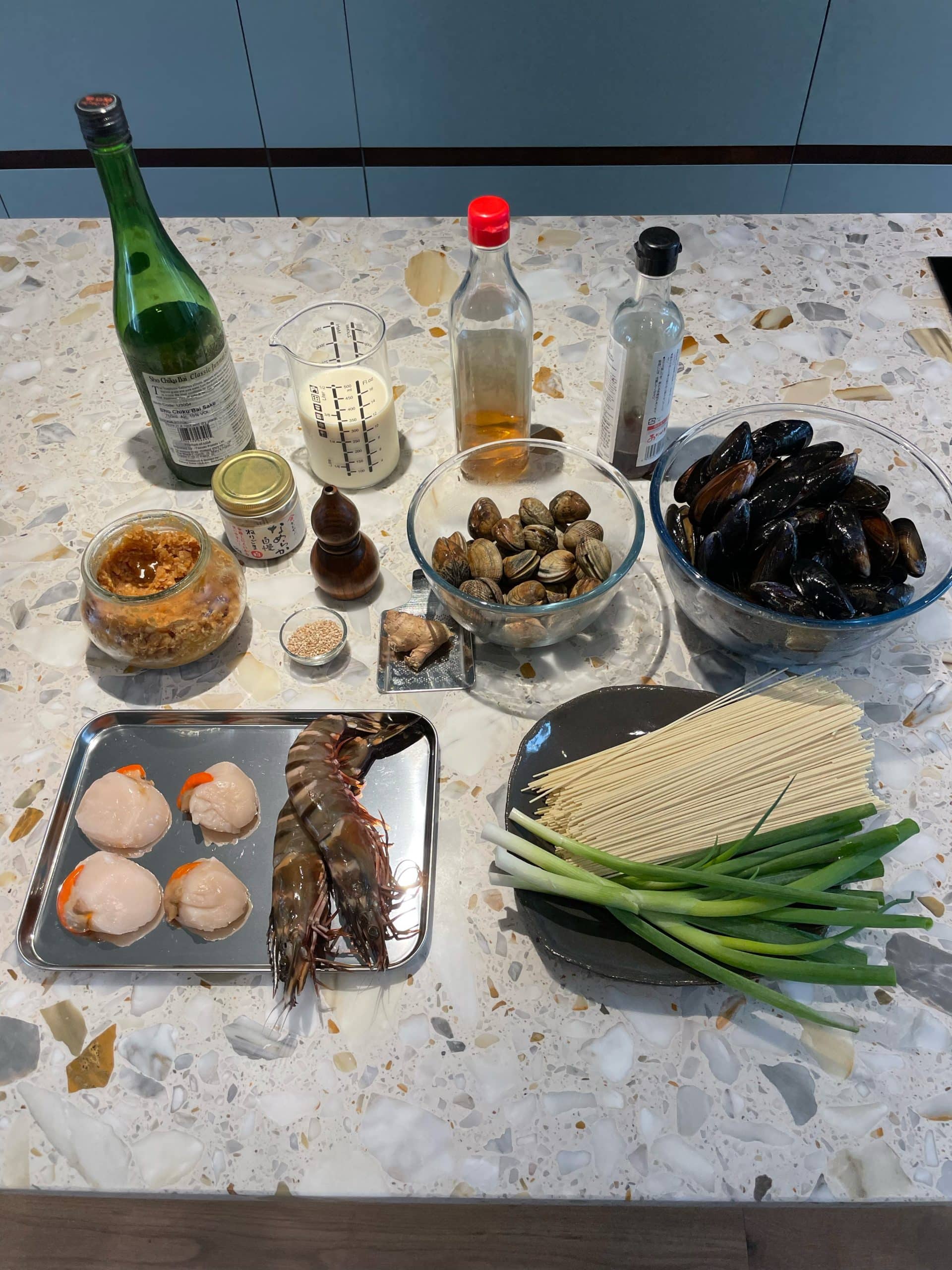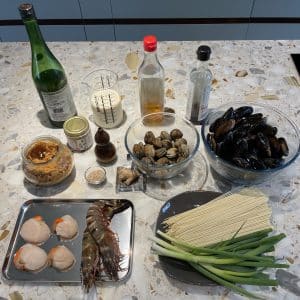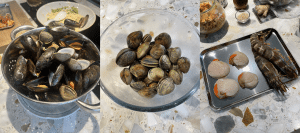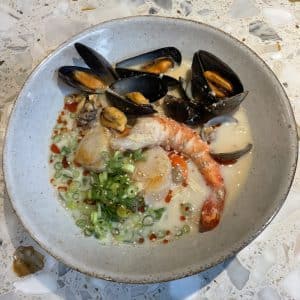

Continuing our series From Yuki’s Kitchen, Yuki Gomi is joined by Aiste Miseviciute, also known as Luxeat, to bring you a tasty yet time-friendly recipe – Seafood Ramen (シーフードラーメン).
In the world of ramen, slow-cooked meat and bones typically steal the spotlight however this seafood rendition takes a different approach. Harnessing the rich flavours of fish and seafood, this recipe ensures a hearty bowl without the need for extensive cooking hours required for meat-based broths.
SEAFOOD RAMEN – シーフードラーメン
This is the best way to make quick and healthy ramen.
In Japan, we normally slow cook meat and bones for hours to make the ramen broth and toppings. But the great thing about fish and seafood is the very short time needed to produce a full-bodied flavour. The resulting ramen is not as heavy as the meat version, but it still has a lovely, rich flavour from soy milk and the combination of seafood used.
I would recommend using a non-stick cast iron shallow casserole pan to sauté the delicate seafood and shellfish. Steam off the mixture with the sake and stock to make a broth at the end. Avoid using lots of different pans to save precious time when washing up!
The recipe is enough for 2 people to enjoy. You can easily adjust the quantities to suit the number of people you’re cooking for.
Serves 2

INGREDIENTS
Ramen Ingredients
Soup Broth
Garnish
Chopped spring onion
Grated white sesame seeds
2 Tbsp. chilli oil, preferably Japanese chilli oil “La-yu” or seven spice “ Shichimi”, but any will do

METHOD
Start by cooking the seafood. Sauté the scallops with vegetable oil for a few minutes on each side and then remove from the pan and place to one side. Add the ginger and king prawns to the same hot pan, sauté for a couple of minutes, and then cover the pan with a lid allowing the prawns to cook for another 2–3 minutes until they become pink. The time required for this step depends on the size of the prawns, be vigilant not to overcook them.
Once the prawns have cooked, remove them from the heat and put to one side. Leave to cool down until you can remove the shells from the prawns without burning your fingers.
Using the same pan to retain the flavour, add the clams and mussels and pour over the sake and cook them for 4–5 minutes. As they cook you will see the shells start to open. Once cooked, separate the cooking juices from the shellfish and keep both to one side.
To make the ramen broth, drop the dried kombu (kelp) into the water with the soy milk to begin infusing the flavours. Then add the mussel and clam juices from the previous step, bringing it all to a boil. As soon as the water begins to boil, remove the kombu pieces. If using dashi powder, there is nothing to remove at this stage. Then, add the tahini, soy sauce, mirin, and miso, stirring well to combine.
To cook the noodles, follow the packet’s instructions as the cooking time varies according to the brand you’re using. Normally they will need around 3 minutes in boiling water before removing and draining.
Place the cooked noodles into a bowl and pour over the soup broth. Top the dish with the cooked seafood and garnish with your choice of spring onions, sesame seeds and chilli oil before serving.

YUKI’S TIPS
Try not to overcook the seafood and noodles. Timing is very important to ensure a tasty ramen! You can experiment with different types of noodles, such as rice noodles (gluten free) or buckwheat noodles.
If you cannot find dried kelp “kombu”, you can also use dried shiitake mushrooms, preparing them in exactly the same way. Another option is to use powdered kombu. Add 1 Tbsp. of powdered kombu instead of the dried version.
Please make sure to use unsweetened soy milk.
If you would like to see more Luxeat content, please click here to view Aiste’s favourite things to eat in Japan.
Abonnieren Sie unseren Newsletter
* Pflichtfeld